The collage wall is beginning to take shape. The small clips are random and is displayed when the wall is in standby mode. The big clips are your friends recordings that apperars when you touch the wall. The text is generated eighter from your movements on the festival or from the speech-to-text function mentioned earlier. We haven't decided yet.
We like the rouged and messy style of the collage but we have to work on the timing, positions, dimentions, exposure of the clips. The sliding text don't work that well because you kind of want it to stand still..
tirsdag 27. mai 2008
Øya Wall test movie
tirsdag 20. mai 2008
Contribution Wall


Our final concept is now looking something like this. There will be a wall with a big screen that displays a collage of videoclips of the guests in a graffiti/"sjablong" style. It will also contain a microphone that converts speech into text. On smaller stations placed around the festival area you can touch with your wristband to record videoclips together with friends, and post it on the big wall if you want to.
søndag 18. mai 2008
Speech to Text
Another idea is to also be able to leave short messages with a voice to text converter and paste them onto the collage wall together with the videoclips. Could be a nice typographic element.
Music Wall
We have also been looking into a concept of collaborative music mixing on the big wall, maybe with dedicated sounds based on your personal Øya-profile. At least we want also the collage wall to be interactive in some kind of way. Maybe just a "touch to upload my clip-function" and then the clip is pasted on the wall in an animated fashion and what not. Or, a way to touch and manipulate the clips and sort of customize them to make the contribution feel more pesonal.
Wall

Our current concept for ØyaPlay is an interactive wall where you can upload small video clips of yourself into a big collage with others. We think this will enhance the overall social feeling of the festival but we struggle a bit in making the actual recording into an amusing and playful event.
fredag 16. mai 2008
Workshop with GK4
Due to the collaboration with students from second grade we held a workshop for the design of the RFID-wristbands. We used the Stig&Stein workshop methode as earlier in the semester.
onsdag 30. april 2008
Even Morrissey can stink
Our new direction in the festival project is to make a karaoke-machine. This singin phenomenon often produce a lot of bad material and is by many concidered being a tacky thing best suited for shady bars.
We on the other hand want to combine this concept with the more refined music culture of Øyafestivalen, with dedicated choices of songs related to the visitors music profile. Can this produce some what more pleasant sounds than the ones heard on the video?
Also take a look at Candice Breitz study on fan-culture and her karaoke experiments.
onsdag 9. april 2008
Tom Na H-iu
Our idea of "Viggo -the friendless installation" is thought to be something like this. Only with the lights moving accordingly to the touching of peoples hands. When more people touch at the same time the feedback changes, thus creating a subject for conversation and collaboration.
fredag 28. mars 2008
lørdag 22. mars 2008
Remote Speaker
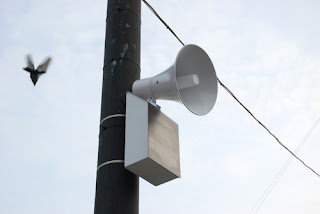
Had to post this one too. This gives people an opportunity to express meanings public without the embarrassing attention of the speakers corner, yet it delivers the message in a more "old-school" way than lets say a sms-chat on a big screen i.e.
Memory Wall
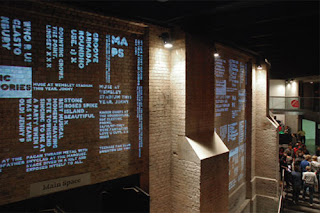
Here is a good example of a relatively simple interactive installation which I guess gives added value to the social experience of a festival. Could be something to look to if we work further with gossip- or the sharing-ideas.
A hint
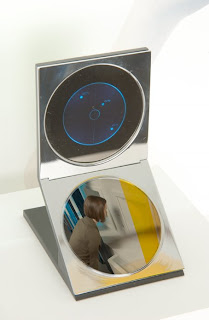
Due to our next direction in the project working with a 'hide and seek'-concept, I found the Spy-on-yourself Beauty Mirror interessting. Giving people at the festival hints on where they are, how they look and so on.
fredag 7. mars 2008
Iteration Three - Platform for prototypes
Festival Feeling
torsdag 6. mars 2008
Iteration Two

Finally we have decided the context of our project and it will be festivals. After evaluating our workshop and the ideas it generated we have found that many of them is about meeting new people, having fun and being social in a playful way within a defined context. We wanted to build on this and dicussed among others the two contexts of festivals or conferences. Festivals seems to be the most suitable for our task whereas we predict that working with the threshold and acceptance of implementing RFID into social settings will be one of our big challenges. On festivals people are probably more relaxed and open to try new things and the atmosphere is not too serious.
Iteration One
Direction
For the direction in our project we have chosen the design breifs RFID and the everyday / Touch as culture and we probably should focus on who to;
-enhance peoples social life (physical world)
-explore peoples acceptance of touch in social context
Reading up on blogs and RFID related sites we dicovered two interessting phenonemon ; Social objects / social life of objects
Social object is of a more abstract nature and can be said to be the shared ground of why interaction occurs .
An example of such a common ground could be Thinglink.org.
Social life of objects could be relevant for us in this project because it is concerning the objects identity, history and ability to communicate. (BookCrossing)
"The interesting thing about Social Objects is not the object itself, but the conversations that happen around them" Hugh Macleod, Gapingvoid.
To sum it up we could say that we want to Work within a tangible, physical approach to social settings.
Observations
It can be difficult to get a direction with such a broad term as social life. First we wanted to sketch out different kinds of social interaction and did some observations, without focusing of any ideas or solutions:
-give short/necassary information (slippery surface)
-read other peoples thoughts (man looking curiously)
-explore other social groups (ethnic mothers with children)
-let objects become personal (parked cars, only personal when owner is present)
-objects that sticks out (giant palm, subject for conversation)
-find things (Marianne got lost)
-help others (man struggling with “rullator”)
-decrease inhibition (children dancing in the fountain)
-borrow objects (man with umbrella)
-get recommendations (girl walking with tempting, newly-baked bread under arm)
-can garbage hold information (tax deduction card in the gutter)
-random meetings (someone slips on the bus, starts a conversation)
-accidental touch (narrow sidewalk)
-disorientation/fear (kid mistaking me for his father)
-peeking/view (looking into peoples home, ground floor)
-locating seats (entering a café)
-ear-dropping/scene (girl and boy in love, playing around a car)
Plan
Arrange a workshop (see older blog post)
-research of peoples networks
-formulate a problem definition
-generate ideas in multiple directions
-investigate thresholds for social interaction web/physical (probe Facebook etc..)
fredag 29. februar 2008
Workshop till you drop
After having two lectures (StigogStein) about how to plan and arrange a workshop earlier this week, Marianne and me arranged our very first workshop.
-write answers big on the wall. People like to share and se what others have answered. We like to see our own contribution on the wall. Ownership.
-keep one focus. It is enough with only one person taking notes or it will decrees attention. If you write on the wall, all the focus should be on the wall. If you sit around a table, all the focus should be on the table and so on..
-keep up the speed. The process becomes more productive with a moderate time pressure.
-try to motivate and engage the persons that is not contributing or is lacking focus. Do it in a positive and optimistic way.
-try to make people elaborate the answers if they are to diffuse or not to the point. Ask them "yes but -why do you think that ... -what is it with...-how did you...etc.
-it is much better to stand than to sit. People tend to get more engaged mentally when they move physically
-remember to take breaks.
-show pictures and make people evaluate them
-sessions tend to last longer than planned
-explain the task carefully so that everyone does the same thing (ex. when generating ideas they should be concrete, because then they will be easier to discuss
Feedback from tutors
-make decisions on what kind of social environment and social relationship we want to work with (family, strangers, friends, colleagues, classmates etc..)
torsdag 28. februar 2008
Living objects
Nanotechnology can be quite inspiring in relation to the social life of objects. Don't know exactly how this technology would be implemented but I think that the ability for things to change shape in that way will reinforce the impression of objects commming to life. This is maybe the layer that is missing now that objects becomes more and more intelligent yet they are to a high degree static in their shape.
tirsdag 26. februar 2008
Four-legged RFID
mandag 25. februar 2008
Social life of objects
Tactic Table inspirations
Imagine using this technology to instruct the higly dynamic game of football. Also including RFID-tagged players on the pitch for positioning their representations on the table.
Tactic Table
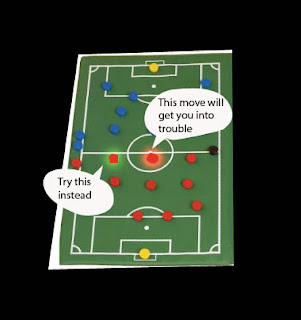
Inspired be the touchscreen found in different projects like the Microsoft Surface I Wonder if this could be applied to the tactic table for football. The existing solution is inspite of it's movable magnetic objects, quite limited in use. A dynamic touchscreen with graphics would provide the trainer with a much richer interface and a better tool to conveie the teams strategy.
søndag 24. februar 2008
Some loose ideas
Major Project - Itteration One
torsdag 21. februar 2008
Tangible interaction projects
Lecture by Timo Arnall and Einar Sneve Martinussen
part 2
Ubiqutous-city, Korea
-we have the home computer but what happens when we move into public spheres?
-american technologies that are not allowed to be tested in the U.S
-
Blinkenlights
-uses large empty buildings as screens where the windows are individual pixels
Open city(Graffiti research lab)
-drawing machine
-large projections on buildings
-using buildings as paper
LED-throwies
-led attached to magnets with batteries that can be thrown onto walls at night
-looking for metal surfaces in the city
-each arrow has a code that you can send a story with 160 characters to a website. the story can then be read by others by sending an sms with the code seen on the specific arrow
-not very successful; maybe built on false assumptions that people want to tell stories, and that people want to read stories from strangers...
-community engangement
-measures your stress level and maps them to areas where you have been and shows them graphically
-started as an abstract project but may now be used in city planning
-dividing mind and body, map your feelings.
-orientation game, treasure hunt to find your way through the city
-address your destination, then you are given different clues and landmarks to find on your way to the destination.
-misused as a game rather than a guide tool
Air (Area's Immediate Readings)
-portable devices which reads air quality
-many of these carried around be people gives a big picture all together
Blogging pigeons
-what if objects blogged?
Windowzoo
-stickers fitted on the windows
Flash mobs / Eat brains
-internet is great at gathering people together
Streetwars
-Hitman-game
-apply to a game master, get an ID and register your address, get a mission which is to shoot a person with a water gun
Etsy.com
-sell your crafts and products that you have made
Thinglink
-show your crafts and things
Instructables.com
Flocks-by christien
Milkproject.net
-track the milk from the cow in mongolia to the table in cheese form in belgium
Megan Trainor- with hidden numbers
RFID snakes and ladders
Symbolic table
Sharer- by Vinay Venkatraman
Everything is a toy
-decided that everything in the world is a toy
RFID mon Amour
Arithmetic Garden- by Masahiko and Takashi
-physical full scale mathematic game
-walk around through gates with different numbers and solve the equation
Yourday- RFID visitor tracking at Alton Towers
-track your day in an amusement park and get it on DVD at the exit
-consider to change for example this controlled context rather than changing everyday life situations
Moving Pictures
Smart urban intelligence
-maps the places where you have been through the day
Interactions of transactions
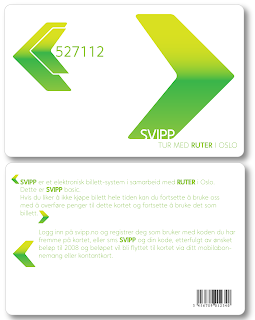
One week group task with Ingrid and Kyrre: Re-design of the ticketing system of the public transportation company Ruter in Oslo, with focus the physical interaction between the TVM, the ticket and the validator device.
onsdag 13. februar 2008
Hairfid- a simple RFID interface
fredag 8. februar 2008
Introduction to Tangible Interactions Studio course 2008
onsdag 9. januar 2008
NRK3 movie

Task from NRK3: create an 8 second short movie branding the new channel. It could be anything but should express values as openminded and accepting. It is an entertainment channel but for the more narrow audience.
Lefsa- cross media storytelling
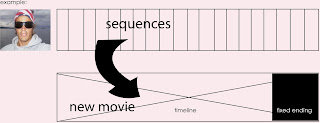

Cross-media storytelling is about telling a story about a product in different medias and to use those medias individual strenghts and advantages to create a synergie effect that strenghtens the product.
Processing

What a nightmare.

